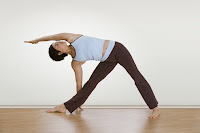By Faye Martins
Of all the ailments we cover in yoga instructor training, cardiovascular disease and cancer are two that most of us know a little about. In many families, one of those two ailments has claimed the lives of family members. You can’t ignore the importance of preventative maintenance, when it comes down to your family medical history.
Yoga is an ancient healing art based on seven major chakras that correspond with various parts of the human body. The fourth chakra, also known as the heart chakra, includes the heart, upper back and upper chest. The middle chakra, it represents love and compassion, acting as the “center” or point of integration for our physical and emotional experiences.
Even medical science now recognizes a condition called stress cardiomyopathy, or “broken heart syndrome,” that stems from sudden, extreme emotional trauma. Other ailments resulting from a blocked heart chakra include feelings of loneliness or the inability to forgive and empathize with other people. Physical manifestations include breathing-related disorders, high blood pressure and heart disease.
Back bending asanas literally “open the heart,” both physically and emotionally. While practitioners teach that self-acceptance and compassion are universal healers, they also recommend asanas to keep the heart healthy. For maximum benefit, any Yoga training session should include pranayama and meditation in addition to physical exercise.
Asanas for a Healthy Heart
• Lying stretches that arch the back over a support, such as a folded blanket
• Arm and shoulder stretches, such as Child’s Pose or Upward Facing Dog
• Backbends that lower the heart and encourage deep breathing, such as Cobra Pose
• Forward bends, such as Big-Toe Bend
• Poses that release pent-up emotions, such as Warrior, Camel or Pigeon Pose
• Seated twists that stretch the spine and rid the body of toxins and tension
In 2004, Yale University School of Medicine released data showing that Yoga lowers pulse rate, blood pressure, and risk of heart disease. Other experts agree. According to authorities at the Institute for Behavioral Medicine at Ohio State University, these benefits may result largely from the meditative component of Yoga.
More recently, however, “Harvard Health Publications” cited evidence that the actual routine of getting in and out of asanas gently exercises the body’s muscles. Anything, they say, that benefits the muscles will also improve the function of the heart and blood vessels and helps to control insulin too. Besides, yogic breathing is deeper and slower than normal breathing rates. As a result, it temporarily lowers blood pressure and halts the release of stress hormones. While more research is needed, the use of asanas for heart health looks promising.
Side notes for Yoga Teachers
If you didn’t cover this in your yoga teacher training, be prepared for students who have heart conditions to come to your classes. Many of the precautions are similar to high blood pressure and stroke. Therefore, make sure your yoga student’s have their physicians approval to begin taking classes. As a Yoga teacher, you have the right to insist on a doctor’s note. Make sure you add a warning to your waiver form.
Some of our students ignore medical advice, but if you decided to become a yoga instructor you want to gently point students with pre-exising medical conditions in the right direction. As Paul has often mentioned: “We safely guide our students with yoga instruction, but if they don’t want to listen, show them the door.” That may sound harsh, but who is to blame, if a person with a pre-existing medical condition is hurt in our class? Do you feel like the law is unclear? You might think people should be responsible for their own health, but the law is never clear. Needless to say, heart patients should be in Restorative classes and stay out of the hot Yoga classes.
© Copyright – Aura Wellness Center – Publications Division
If you are a Yoga Teacher, studio manager, blogger, e-zine, or website publisher, and are in need of quality content, please feel free to use my blog entries (articles). Please be sure to reprint each article, as is, including the resource box above. Namaste!






